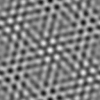Free Online Productivity Tools
i2Speak
i2Symbol
i2OCR
iTex2Img
iWeb2Print
iWeb2Shot
i2Type
iPdf2Split
iPdf2Merge
i2Bopomofo
i2Arabic
i2Style
i2Image
i2PDF
iLatex2Rtf
Sci2ools
119
Voted
ICCV
2003
IEEE
2003
IEEE
On the Use of Marginal Statistics of Subband Images
A commonly used representation of a visual pattern is the set of marginal probability distributions of the output of a bank of filters (Gaussian, Laplacian, Gabor etc...). This representation has been used effectively for a variety of vision tasks including texture classification, texture synthesis, object detection and image retrieval. This paper examines the ability of this representation to discriminate between an arbitrary pair of visual stimuli. Examples of patterns are derived that provably possess the same marginal statistical properties, yet are "visually distinct." These results suggest the need for either employing a large and diverse filter bank or incorporating joint statistics in order to represent a large class of visual patterns.
Computer Vision | Diverse Filter Bank | ICCV 2003 | Marginal Probability Distributions | Marginal Statistical Properties | Visual Patterns | Visual Stimuli |
Related Content
| Added | 15 Oct 2009 |
| Updated | 31 Oct 2009 |
| Type | Conference |
| Year | 2003 |
| Where | ICCV |
| Authors | Joshua Gluckman |
Comments (0)

